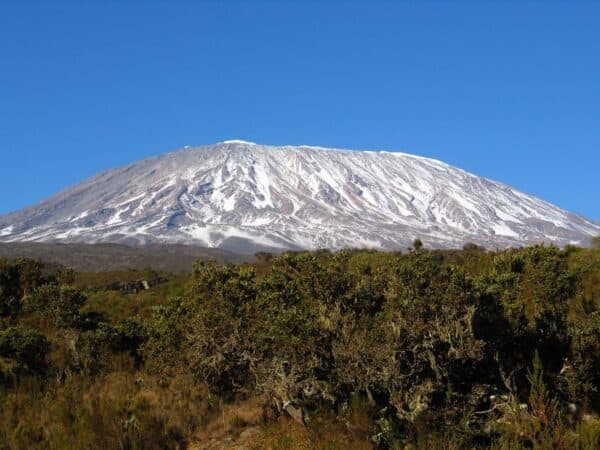Tanzania is committed to planting five million trees on the slopes of Mount Kilimanjaro by 2030, as it seeks to save its famed glaciers on the summit from total melting, courtesy of the climate change.
Created in 1973 to protect and restore ecological integrity for current and future generations, the Kilimanjaro National Park, has along the way, become a tourism jewel, generating multi-million-dollar annual revenue for Tanzania‘s economy and creating hundreds of thousands of jobs for the locals.
However, the United Nations (UN) experts predict that the legendary snow, one of key tourists’ attractions on the peak of Mount Kilimanjaro, the Roof of Africa, will completely disappear by 2050 as a result of the ripple effects of climate change.
While the UN says the trend could be reversed if the world cuts down global warming by 1.5 degrees centigrade, some studies indicate that 80 percent of the snow had been broken down since early last century.
Officiating at the climax of the fiftieth anniversary of the establishment of the Kilimanjaro National Park (KINAPA), one of the key world heritage sites, the Natural Resources and Tourism Minister, Mr Mohamed Mchengerwa said:
“We are committed to plant five million trees on the slopes of Mount Kilimanjaro in our latest effort to rescue the snow from disappearing”.
Mr. Mchengerwa also urged the climbers to refrain from activities, which pollute and jeopardize the mountain, saying the ministry consider putting in place waste disposal and surveillance systems along the mountain’s ascending and descending routes.
“It is time we promote use of alternative energy to reduce the widespread application of firewood and charcoal,” he said.
Tanzania National Parks (TANAPA) Conservation Commissioner William Mwakilema was optimistic that the trees would generate sufficient moisture and rain required for preserving the snow on the mountain, popularly known as the Roof of Africa.
“The forest, rich in wildlife animals surrounding the mountain at between 1,700 and 2,700 metres above sea level, greatly contributes to mitigating climate change,” Mr Mwakilema observed.
Besides rolling out the tree-planting program, TANAPA, in collaboration with over 200 conservation and tourism players from 11 outfits, carried out various other activities to celebrate the anniversary of one of Tanzania’s 22 national parks created on March 16, 1973.
They include cleaning Mount Kilimanjaro’s ascending and descending routes and debating on the eve of the climax of the anniversary on the mountain, tourism and climate change, the activity, which involved over 170 conservation and tourism players, higher learning students and ordinary citizens.
“TANAPA will continue collaborating with conservation and tourism players, the government, the public, private firms, researchers and journalists in ensuring ecological systems continue being conserved and protected for sustainable development,” Mr Mwakilema said during the commemoration held at Marangu Gate.
“The deliberations on the Mount Kilimanjaro awe-inspiring journey have touched on the changes in diversity that the local area has seen, reflecting how tourism has been funneling millions of dollars annually into community and conservation drive in Tanzania as well as impact of climate change,” Mr. Mwakilema told e-Turbonews in an exclusive interview.
Transferring dollars from international tourists to poor people living around tourist destinations has been a major challenge across the world.
However, according to the SNV study dubbed ‘Tracing the Tourist Dollar in Northern Tanzania, climbing Mount Kilimanjaro is a more pro-poor activity compared to other tourist attractions.
The study shows 28 percent of revenues generated on Africa’s highest peak trickle into the poor communities, opposed to 19 percent of revenue accrued from tourist sites in the famous northern tourism circuit.
This implies that 56,000 tourists, who scale up Mount Kilimanjaro and leave behind $50 million revenue annually, pump $14 million out of the sum to the pockets of poor folks who solely depend on trekking to make their lives going.
All the wages and tips received by climbing staff are considered to be 100 percent pro-poor. All guides and porters interviewed were reportedly coming from poor family backgrounds.
For many, this is the most effective model of transferring of resources from international tourists to poor people living around the destination that has even been seen in Africa and Asia.



